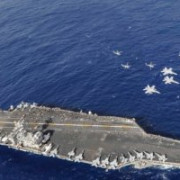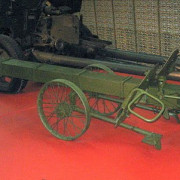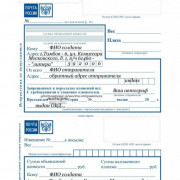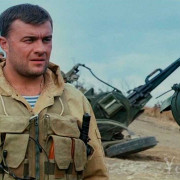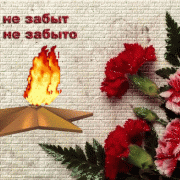Список вариантов mcdonnell douglas f-4 phantom ii
Содержание:
- History
- 60% авионики покупали у сторонних производителей
- Самолет поставляли в 11 стран, кое-где он все еще в составе ВВС
- Израиль
- Usage in battles
- External links
- История создания
- Description[]
- Operators[]
- External links
- Usage in battles
- Основные лётно-технические характеристики самолёта F-4K «Фантом»
- Armaments
- F-4K/M. На чертеже:
- Япония
- History
- General info
History
Describe the history of the creation and combat usage of the aircraft in more detail than in the introduction. If the historical reference turns out to be too long, take it to a separate article, taking a link to the article about the vehicle and adding a block «/History» (example: https://wiki.warthunder.com/(Vehicle-name)/History) and add a link to it here using the template. Be sure to reference text and sources by using , as well as adding them at the end of the article with . This section may also include the vehicle’s dev blog entry (if applicable) and the in-game encyclopedia description (under , also if applicable).
60% авионики покупали у сторонних производителей
Испытания «F-4 Phantom II» начались еще в 1958 году. Продолжение концепции перспективного, но малоизвестного «FH Phantom», «F-4» разрабатывался как ударный истребитель, то есть самолет типа «воздух — воздух», однако с возможностью сбрасывать бомбы.
«Кривой» нос самолета, зазубренное крыло и большие воздухозаборники были символом западной авиации во время Холодной войны. В конечном счете «F-4» будет служить многоцелевым истребителем, перехватчиком, самолетом подавления ПВО и разведывательным самолетом. Он стал одним из первых самолетов, умеющих находить и поражать цели за пределами визуального контакта без поддержки наземной инфраструктуры.
Многозадачность была обусловлена продуманной конструкцией. «F-4» был достаточно большим, чтобы нести ракеты и бомбы класса «воздух-воздух» вместе. Укомплектовать самолет можно было практически любыми боеприпасами, в том числе тактическими ядерными бомбами «B61».
При этом около 60% авионики (компонентов для бортовых приборов) поставлялась сторонними компаниями, причем на конкурсной основе.
Самолет поставляли в 11 стран, кое-где он все еще в составе ВВС
Истребитель стал весьма популярен по всему миру: его покупали 11 стран, включая Австралию, Японию, Южную Корею, Испанию, Германию, Грецию, Израиль, Египет, Иран, Турцию и Великобританию. При этом самолет был встрою настолько долго, что несколько раз менялась геополитическая обстановка: так, Иран уже не был союзником США, а «Фантомов» использовал. Застал самолет и объединение ФРГ с ГДР.
Производство самолетов «F-4 Phantom II» остановили в 1985 году, однако неприхотливость машин и наличие достаточного количества запасных частей позволили ему все еще оставаться боевой машиной многих стран. По состоянию на 2016 год его использовали ВВС Японии, Ирана и Израиля, причем у Ирана было 64 машины.
Израиль
Израильский F-4E на статической экспозиции в Хилл Ольги города Хадера , Израиль
F-4 Phantom II на территории технологического колледжа IAF
- На экране
- F-4E
Экспонат в районе Гиват Ольга города Хадера (ЦАХАЛ, серийный № 702 / строительный номер 4289)
- Двадцать один самолет, в том числе три RF-4E, выставлены в Музее ВВС Израиля на авиабазе Хацерим в пустыне Негев .
- F-4E Phantom II, IDF серийный № 327, строительный номер 3203, номерной код ВВС США 67-0346.
- F-4E-32-MC Phantom II, IDF серийный № 334, строительный номер 2954, серийный номер ВВС США 66-0327. Прототип , представленный на под номером 229 и гражданским регистрационным номером 4X-JPA.
- F-4E Phantom II, IDF серийный № 323, строительный номер 3461, серийный номер ВВС США 68-0380.
- F-4E Phantom II, IDF serial # 156, Construction Number 3920, United States Air Force s / n 69-7245.
- RF-4E-44-MC Phantom II, IDF серийный № 498 (ранее 146), строительный номер 4017, серийный номер ВВС США 69-7567.
- F-4E Phantom II, IDF серийный № 614, строительный номер 4020, ВВС США, серийный номер 69-7568.
- F-4E Phantom II, IDF серийный № 297, строительный номер 4822, серийный номер ВВС США 74-1015.
- RF-4E Phantom II, IDF серийный № 485, строительный номер 4930, ВВС США, серийный номер 75-0418.
- F-4E-39-MC Phantom II, серийный номер IDF 122 (ранее 22, 622), строительный номер 3529, серийный номер ВВС США 68-0417.
- F-4E-42-MC Phantom II, IDF серийный № 111 (ранее 11), строительный номер 3840, серийный номер ВВС США 69-0299.
- F-4E-44-MC Phantom II, серийный номер IDF 148 (ранее 648), строительный номер 4021, серийный номер ВВС США 69-7569.
- F-4E-48-MC Phantom II, серийный номер IDF 189, строительный номер 4223, серийный номер ВВС США 71-0235.
- F-4E-49-MC Phantom II, IDF серийный № 208 (ранее 108), строительный номер 4263, серийный номер ВВС США 71-1090.
- F-4E-41-MC Phantom II, IDF серийный № 171, строительный номер 3721, серийный номер ВВС США 68-0524.
- F-4E-60-MC Phantom II, IDF серийный № 295, строительный номер 4817, серийный номер ВВС США 74-1014.
- F-4E-36-MC Phantom II, серийный номер IDF 328, строительный номер 3238, серийный номер ВВС США 67-0362.
- F-4E-41-MC Phantom II, IDF серийный № 187, строительный номер 3751, серийный номер ВВС США 68-0544.
- RF-4E-45-MC Phantom II, серийный номер IDF 488 (ранее 198), строительный номер 4061, серийный номер ВВС США 69-7592.
- F-4E-53-MC Phantom II, IDF серийный № 261, строительный номер 4354, номерной знак ВВС США 71-1791.
- F-4E-53-MC Phantom II, IDF серийный № 266, строительный номер 4391, номерной знак ВВС США 71-1792.
- F-4E-62-MC Phantom II, серийный номер IDF 223, строительный номер 4885, серийный номер ВВС США 74-1027.
- Один F-4E выставлен в Технологическом колледже IAF, Беэр-Шева (бортовой номер 277 / серийный номер 4505).
Usage in battles
The aircraft is pretty heavy, rather quick in acceleration and top speed and doesn’t have the best turn time. Its armament, however, is impressive. With the gun pod modification equipped, you’ll fire enough lead downrange to destroy any air target. Using the phantom as a turnfighter is generally ill-advised. Therefore, try to ambush a unsuspecting enemy. Even the single 20 mm cannon will give any foe a fiery end.
Using the bombs on the F-4F usually isn’t that great of an idea: the match often evolves to the later stages before you will be able to rearm, and then two situations usually occur. Situation 1 involves your team destroying more aircraft of the enemy team, leading to a victory where bombing bases turned out to not be decisive and therefore it can be argued you are a dead weight. Situation 2 is when your team is losing. After you dropped the payload and destroyed the base in situation 2, the opposite team will start to hunt down the remaining friendly players. You might be able to survive 1 or 2 enemies, but having four on our tail usually ends badly.
Any engagement will boil down to three basic situations: you find an enemy doing a head-on, you chase an enemy or you get chased by the enemy. When doing a head-on, missiles aren’t very effective so don’t bother using them. Keep in mind if you’re fighting another phantom, that he’ll often have the afterburner on, and given the engines slight downward angle, kind of «drift», which has to be taken into account before taking the shot. You usually want to fire at around 3 km during the head-on, and keep on firing either until you get a critical hit(i.e he lost tail control, wings or he is on fire) or you can hear his shells whizzing by. In either situation, break off (an aircraft with no control travelling at 600 or more km/h still has a lot of kinetic energy, and the second situation speaks for itself). Otherwise, try to get onto his tail by starting to break off before he has passed you.
If you are chasing an enemy, try to predict his movements: your shells have a high muzzle velocity, but the enemy is still a fast and therefore difficult target. Fire along the path they can possibly go through, wasting ammo but securing a (usually critical) hit. Know when to disengage, i.e rolling scissors or another enemy is engaging you.
If you are being chased by the enemy, try to be as far and as fast as possible: if you have friendly fighters nearby, try to bait the enemies towards your teammates. If you play on a map with ships that have CIWS, many players usually underestimate those systems. It doesn’t give you the kill but it keeps you alive to get more kills or bait more players. If a missile is locked onto you, try to lose as little energy as possible whilst also making sure the missile won’t hit. Remember that you do not have countermeasures.
The missiles on the F-4F, apart from the AIM-9J, aren’t very good. the AIM-9B FGW.2 and AIM-9E both have pretty poor lock-on range, small targeting window and they can pull roughly 10 G. The AIM-9J is better, it has a higher lock-on range, a pretty large targeting window, can pull 20 G and is faster. You want to fire a missile when the enemy is close and slow. Very close targets usually don’t have the time to activate countermeasures, or the countermeasures are flat out ignored. Another way of using missiles is to make the enemy lose their energy, and making them an easy target to hit with either another missile or with your cannon.
Pros and cons
Pros:
- Good performance at high altitude
- Can carry up to 12,000 lb of ordnance
- Varied and mixed armament presets allow for multipurpose usage in ground battles
- AIM-9J are one of the best missiles in game
Cons:
- Lacks countermeasures (flares/chaff)
- Lacks SARH missiles found on other Phantoms, such as the AIM-7 Sparrow
- Underwhelming performance at very low altitudes
- Lacks a Ballistic Computer
- Cannot carry more than 4 missiles
- Dodging IR missiles is harder, with its 2 engines, which make a bigger heat signature near the plane
External links
| McDonnell Aircraft Corporation | |
|---|---|
| Jet Fighters | F2H-2 · F3H-2 |
| F-4C Phantom II · F-4E Phantom II | |
| Export / License | F-4EJ Phantom II · F-4F Early · F-4F · Phantom FG.1 · Phantom FGR.2 |
| The McDonnell Aircraft Corporation merged with Douglas Aircraft Company in 1967 to form McDonnell Douglas. | |
| See Also | Mitsubishi Heavy Industries |
| USA jet aircraft | |
|---|---|
| F-4 | F-4C Phantom II · F-4E Phantom II |
| F-5 | F-5A · F-5C · F-5E |
| F-8 | F8U-2 · F-8E |
| F-80 | F-80A-5 · F-80C-10 |
| F-84 | F-84B-26 · F-84F · F-84G-21-RE |
| F-86 | F-86A-5 · F-86F-25 · F-86F-2 · F-86F-35 |
| F-89 | F-89B · F-89D |
| F-104 | F-104A · F-104C |
| F9F | F9F-2 · F9F-5 · F9F-8 |
| FJ-4 | FJ-4B · FJ-4B VMF-232 |
| Other | P-59A · F2H-2 · F3D-1 · F3H-2 · F11F-1 · F-100D |
| A-4 | A-4B · A-4E Early |
| A-7 | A-7D · A-7E |
| AV-8 | AV-8A · AV-8C |
| B-57 | B-57A · B-57B |
История создания
В 1952 Дэйв Льюис, заведующий подразделением аэродинамики в McDonnell Douglas был назначен менеджером перспективного проектирования. Хотя новых авиационных конкурсов на проектирование открыто не было, внутренняя информация из сред Военно-морского флота говорила о сформировавшейся необходимости Флота в новом типе самолета — ударный истребитель.
В 1954 McDonnell Aircraft начали работу по пересмотру концепции их палубного истребителя F3H Demon, в поисках увеличения возможностей и улучшения летных данных. Компания подготовила несколько проектов с использованием различных двигателей, одного Wright J67, двух Wright J65 или General Electric J79. Версия с General Electric J79 позволяла ожидать максимальной скорости в 1.97 маха. 19 сентября 1953, McDonnell обратилась к Военно-морскому флоту США с предложением нового самолета «Super Demon». Самолет был уникально гибок в конструкции: он мог быть оборудован одно и двух-местной кабиной для различных миссий, вмещать в различных вариантах носовой части радар, разведывательную фотоаппаратуру, четыре 20 мм пушки или 56 неуправляемыми ракетами со складывающимся оперением в дополнение к 9 узлам внешней подвески под крыльями и фюзеляжем. ВМС США были заинтересованы в строительстве полномасштабного макета F3H-G/H, но новинки Grumman XF9F-9 и Vought XF8U-1 уже удовлетворили потребность в сверхзвуковом истребителе.
В следствии этого проект McDonnell был переработан во всепогодный истребитель-бомбардировщик с 11 внешними узлами подвески вооружения и 18 октября 1954, компанией было получено письмо о заинтересованности ведомства в постройке двух прототипов. 26 мая 1955 делегация состоящая из четырех офицеров ВМС США представила совершенно новые требования к новому самолету. Так как необходимость ВМС в бомбардировщике для ударов по наземным целям была удовлетворена Douglas A-4 Skyhawk, а F-8 Crusader решал задачи борьбы с истребителями, проекту McDonnell предстояло занять нишу всепогодного перехватчика противовоздушной обороны морского флота. Второму члену экипажа в таком проекте предстояло работать с мощным радаром.
Проекции самолета McDonnell Douglas F-4 Phantom II
Description[]
The F-4 Phantom II is a twin-engine, all-weather, third generation fighter-bomber. The cost of a new one during its age was 2.4 million. The aircraft could perform four tactical air roles: air superiority, interdiction, close air support and fleet defense, as it did in Southeast Asia and the Middle East. First flown in May 1958, the Phantom II originally was developed for U.S. Navy fleet defense and entered service in 1961. The USAF evaluated it for close air support, interdiction, and counter-air operations and, in 1962, approved a USAF version after it was discovered to be over 100 miles per hour faster than the F-104 Starfighter. The USAF’s Phantom II, designated F-4C, made its first flight on May 27, 1963. Production deliveries began in November 1963. In its air-to-ground role the F-4 could carry twice the normal bomb load of a WW II B-17. During the 1970s and 1980s, F-4s gradually started getting replaced by more modern aircraft such as the F-15 Eagle and F-16 Fighting Falcon in the U.S. Air Force, the F-14 Tomcat in the U.S. Navy, and the F/A-18 Hornet in the U.S. Navy and U.S. Marine Corps. Phantom II production ended in 1979 after over 5,000 had been built more than 2,600 for the USAF, about 1,200 for the Navy and Marine Corps, and the rest for friendly foreign nations, including to Israel, Iran, Greece, Spain, Turkey, South Korea, West Germany, Australia, Japan, and Great Britain. The F-4 was used extensively in the Vietnam War, where its numerous dogfights with North Vietnamese MiG fighters earned it the nickname «the world’s leading distributor of MiG parts.» The Phantom also saw service in the Middle East with the Israeli Air Force. The Israeli Phantoms were delivered under the Peace Echo I though IV and Nickel Grass programs. Israeli F-4E Phantoms were nicknamed Kurnass (heavy hammer) while the RF-4E’s was called Orev (raven). In the Beqqa Valley the Phantom shot down 4th generation soviet aircraft piloted by Russians under Syrian markings. The last Israeli Phantoms were retired in 2004. Later versions of this aircraft, such as the F-4G Wild Weasel were still active in the U.S. Air Force inventory well into the 1990s with the uses of reconnaissance and «Wild Weasel» anti-aircraft missile suppression missions during the Gulf War of 1991; F-4s finally ending service in 1996. F-4s are no longer in the USAF inventory but are still flown by foreign nations.
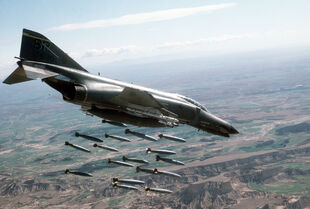
F-4 Phamtom in a bombing operation
The aircraft is still used by the USAF in an unmanned drone form (the QF-4E) for training in air-to-air gunnery. In one particular incident, a flight of four F-22 Raptors were on a training mission where they had to ‘intercept’ a QF-4E. Each Raptor fired missiles at it, but for some reason, all of them missed, despite the QF-4E flying in a straight line the whole time. Finally, all four Raptors fired missiles all at once and finally shot down the aging Phantom. A veteran pilot on the ground was known to have said «So it takes four Raptors to shoot down one Phantom…».
Starting in 1973, F-4E’s were fitted with target-identification systems for long-range visual identification of airborne or ground targets. Each system is basically a television camera with a zoom lens to aid in positive identification, and a system called Pave-Tack, which provided day and night all-weather capability to acquire, track and designate ground targets for laser, infrared and electro-optically guided weapons. Another change was a digital intercept computer that includes launch computations for all AIM-9 Sidewinder and AIM-7 Sparrow.
Operators[]
Australia
Royal Australian Air Force — a batch of 24 F-4E operated under a lease agreement due to delays with F-111 procurement.
- South Korea
South Korean Air Force
- Egypt
Egyptian Air Force Two F-4G Wild Weasels of the U.S. Air Force
- Germany
Luftwaffe — F-4F version, originally intended as a single seat variant of the F-4E
- Japan
Japan Self-Defense Air Force
Greece
Hellenic Air Force
- Iran
Islamic Repulblic of Iran Air Force
- Israel
Israeli Air Force
- United Kingdom
Royal Air Force
- Spain
Ejercito del Aire
- United States
- United States Air Force
- United States Marine Corps
- United States Navy
- Turkey
Turkish Air Force
External links
| McDonnell Aircraft Corporation | |
|---|---|
| Jet Fighters | F2H-2 · F3H-2 |
| F-4C Phantom II · F-4E Phantom II | |
| Export / License | F-4EJ Phantom II · F-4F Early · F-4F · Phantom FG.1 · Phantom FGR.2 |
| The McDonnell Aircraft Corporation merged with Douglas Aircraft Company in 1967 to form McDonnell Douglas. | |
| See Also | Mitsubishi Heavy Industries |
| Germany jet aircraft | |
|---|---|
| Ar 234 | Ar 234 B-2 · Ar 234 C-3 |
| He 162 | He 162 A-1 · He 162 A-2 |
| Ho 229 | Ho 229 V3 |
| Me 163 | Me 163 B · Me 163 B-0 |
| Me 262 | Me 262 A-1a · Me 262 A-1a/Jabo · Me 262 A-1a/U1 · Me 262 A-1/U4 · Me 262 A-2a · Me 262 C-1a · Me 262 C-2b |
| USA | ▀F-84F · CL-13A Mk 5 · CL-13B Mk.6 · ▀F-86K · F-104G · F-4F Early · F-4F |
| USSR | ▀MiG-15bis · ▀MiG-19S · ▀MiG-21 SPS-K · ▀MiG-21MF · ▀MiG-21bis-SAU · ▀IL-28 |
| Britain | Sea Hawk Mk.100 |
| Italy | ▀G.91 R/3 · ▀G.91 R/4 |
Usage in battles
Describe the tactics of playing in the aircraft, the features of using aircraft in a team and advice on tactics. Refrain from creating a «guide» — do not impose a single point of view, but instead, give the reader food for thought. Examine the most dangerous enemies and give recommendations on fighting them. If necessary, note the specifics of the game in different modes (AB, RB, SB).
Pros and cons
Summarise and briefly evaluate the vehicle in terms of its characteristics and combat effectiveness. Mark its pros and cons in the bulleted list. Try not to use more than 6 points for each of the characteristics. Avoid using categorical definitions such as «bad», «good» and the like — use substitutions with softer forms such as «inadequate» and «effective».
Pros:
Cons:
Основные лётно-технические характеристики самолёта F-4K «Фантом»
|
Модификация |
F-4K FG.1 |
|
Год выпуска |
1966 |
|
Размах крыла, м |
11,61 |
|
Размах крыла (при сложенных консолях), м |
8,23 |
|
Длина (с ПВД), м |
17,76 |
|
Высота, м |
5 |
|
Площадь крыла, м2 |
49,24 |
|
Двигатель |
RB.168-25R Spey Mk 202/203 |
|
Тяга двигателя «максимал», кгс |
5670 |
|
Тяга двигателя «форсаж», кгс |
9625 |
|
Макс, скорость, км/ч: |
|
|
у земли |
1464 |
|
на высоте 12 ООО м |
2230 |
|
Практический потолок, м |
21 640 |
|
Боевой потолок, м |
17 680 |
|
Радиус действия, км |
— |
|
Макс, скороподъёмность, м/с |
251 |
|
Перегоночная дальность полёта (без ГОЬ), км |
3560 |
|
Масса пустого, кг |
14 060 |
|
24 790 |
|
|
Макс, взлётная масса, кг |
27 500 |
|
Макс, запас топлива (внутренние баки), л |
6703 |
А.ЧЕЧИН, Н. ОКОЛЕЛОВМоделист-Конструктор, № 9’2012
Armaments
Offensive armament
Weapon 120 mm M61 cannon
Ammunition640 rounds
Fire rate6 000 shots/min
Main article: M61 (20 mm)
The F-4F Early is armed with:
1 x 20 mm M61 cannon, chin-mounted (640 rpg)
Suspended armament
Number of setups32
List of setups
Setup 12 x AIM-9B FGW.2 Sidewinder air-to-air missiles
Setup 22 x 20 mm M61 cannon(ammunition: 2 400 rounds)
Setup 32 x 20 mm M61 cannon(ammunition: 2 400 rounds)
4 x AIM-9B FGW.2 Sidewinder air-to-air missiles
Setup 42 x 20 mm M61 cannon(ammunition: 2 400 rounds)
4 x AIM-9E Sidewinder air-to-air missiles
Setup 52 x 20 mm M61 cannon(ammunition: 2 400 rounds)
4 x AIM-9J Sidewinder air-to-air missiles
Setup 624 x 500 lb LDGP Mk 82 bomb
Setup 716 x 750 lb M117 cone 45 bomb
Setup 811 x 1000 lb LDGP Mk 83 bomb
Setup 93 x 2000 lb LDGP Mk 84 bomb
Setup 104 x AIM-9B FGW.2 Sidewinder air-to-air missiles
Setup 114 x AIM-9E Sidewinder air-to-air missiles
Setup 124 x AIM-9J Sidewinder air-to-air missiles
Setup 13285 x FFAR Mighty Mouse rockets
Setup 1460 x Zuni Mk32 Mod 0 ATAP rockets
Setup 1518 x 500 lb LDGP Mk 82 bomb
4 x AIM-9E Sidewinder air-to-air missiles
Setup 1618 x 500 lb LDGP Mk 82 bomb
4 x AIM-9J Sidewinder air-to-air missiles
Setup 1718 x 500 lb LDGP Mk 82 bomb
4 x AIM-9B FGW.2 Sidewinder air-to-air missiles
Setup 1810 x 750 lb M117 cone 45 bomb
4 x AIM-9B FGW.2 Sidewinder air-to-air missiles
Setup 1910 x 750 lb M117 cone 45 bomb
4 x AIM-9E Sidewinder air-to-air missiles
Setup 2010 x 750 lb M117 cone 45 bomb
4 x AIM-9J Sidewinder air-to-air missiles
Setup 217 x 1000 lb LDGP Mk 83 bomb
4 x AIM-9B FGW.2 Sidewinder air-to-air missiles
Setup 227 x 1000 lb LDGP Mk 83 bomb
4 x AIM-9E Sidewinder air-to-air missiles
Setup 237 x 1000 lb LDGP Mk 83 bomb
4 x AIM-9J Sidewinder air-to-air missiles
Setup 243 x 2000 lb LDGP Mk 84 bomb
4 x AIM-9B FGW.2 Sidewinder air-to-air missiles
Setup 253 x 2000 lb LDGP Mk 84 bomb
4 x AIM-9E Sidewinder air-to-air missiles
Setup 263 x 2000 lb LDGP Mk 84 bomb
4 x AIM-9J Sidewinder air-to-air missiles
Setup 274 x AIM-9B FGW.2 Sidewinder air-to-air missiles
171 x FFAR Mighty Mouse rockets
Setup 284 x AIM-9E Sidewinder air-to-air missiles
171 x FFAR Mighty Mouse rockets
Setup 294 x AIM-9J Sidewinder air-to-air missiles
171 x FFAR Mighty Mouse rockets
Setup 304 x AIM-9B FGW.2 Sidewinder air-to-air missiles
36 x Zuni Mk32 Mod 0 ATAP rockets
Setup 314 x AIM-9E Sidewinder air-to-air missiles
36 x Zuni Mk32 Mod 0 ATAP rockets
Setup 324 x AIM-9J Sidewinder air-to-air missiles
36 x Zuni Mk32 Mod 0 ATAP rockets
Main articles: LDGP Mk 82 (500 lb), M117 cone 45 (750 lb), LDGP Mk 83 (1,000 lb), LDGP Mk 84 (2,000 lb), M61 (20 mm)
Main articles: AIM-9B FGW.2 Sidewinder, AIM-9E Sidewinder, AIM-9J Sidewinder, FFAR Mighty Mouse, Zuni Mk32 Mod 0 ATAP
The F-4F Early can be outfitted with the following ordnance:
- Without load
- 2 x AIM-9B FGW.2 Sidewinder missiles
- 2 x 20 mm M61 cannons (1,200 rpg = 2,400 total)
- 2 x 20 mm M61 cannons + 4 x AIM-9B FGW.2 Sidewinder missiles
- 2 x 20 mm M61 cannons + 4 x AIM-9E Sidewinder missiles
- 2 x 20 mm M61 cannons + 4 x AIM-9J Sidewinder missiles
- 24 x 500 lb LDGP Mk 82 bombs (12,000 lb total)
- 16 x 750 lb M117 cone 45 bombs (12,000 lb total)
- 11 x 1,000 lb LDGP Mk 83 bombs (11,000 lb total)
- 3 x 2,000 lb LDGP Mk 84 bombs (6,000 lb total)
- 4 x AIM-9B FGW.2 Sidewinder missiles
- 4 x AIM-9E Sidewinder missiles
- 4 x AIM-9J Sidewinder missiles
- 285 x FFAR Mighty Mouse rockets
- 60 x Zuni Mk32 Mod 0 ATAP rockets
- 18 x 500 lb LDGP Mk 82 bombs (9,000 lb total) + 4 x AIM-9B FGW.2 Sidewinder missiles
- 18 x 500 lb LDGP Mk 82 bombs (9,000 lb total) + 4 x AIM-9E Sidewinder missiles
- 18 x 500 lb LDGP Mk 82 bombs (9,000 lb total) + 4 x AIM-9J Sidewinder missiles
- 10 x 750 lb M117 cone 45 bombs (7,500 lb total) + 4 x AIM-9B FGW.2 Sidewinder missiles
- 10 x 750 lb M117 cone 45 bombs (7,500 lb total) + 4 x AIM-9E Sidewinder missiles
- 10 x 750 lb M117 cone 45 bombs (7,500 lb total) + 4 x AIM-9J Sidewinder missiles
- 7 x 1,000 lb LDGP Mk 83 bombs (7,000 lb total) + 4 x AIM-9B FGW.2 Sidewinder missiles
- 7 x 1,000 lb LDGP Mk 83 bombs (7,000 lb total) + 4 x AIM-9E Sidewinder missiles
- 7 x 1,000 lb LDGP Mk 83 bombs (7,000 lb total) + 4 x AIM-9J Sidewinder missiles
- 3 x 2,000 lb LDGP Mk 84 bombs (6,000 lb total) + 4 x AIM-9B FGW.2 Sidewinder missiles
- 3 x 2,000 lb LDGP Mk 84 bombs (6,000 lb total) + 4 x AIM-9E Sidewinder missiles
- 3 x 2,000 lb LDGP Mk 84 bombs (6,000 lb total) + 4 x AIM-9J Sidewinder missiles
- 171 x FFAR Mighty Mouse rockets + 4 x AIM-9B FGW.2 Sidewinder missiles
- 171 x FFAR Mighty Mouse rockets + 4 x AIM-9E Sidewinder missiles
- 171 x FFAR Mighty Mouse rockets + 4 x AIM-9J Sidewinder missiles
- 36 x Zuni Mk32 Mod 0 ATAP rockets + 4 x AIM-9B FGW.2 Sidewinder missiles
- 36 x Zuni Mk32 Mod 0 ATAP rockets + 4 x AIM-9E Sidewinder missiles
- 36 x Zuni Mk32 Mod 0 ATAP rockets + 4 x AIM-9J Sidewinder missiles
F-4K/M. На чертеже:
1 — выносная штанга для лётных испытаний; 2 — кресло «Мартин-Бейкер» (Martin-Baker) Mk.H5; 3 — антенна (только на прототипе); 4 — телевизионная прицельная система; 5 — отверстия слива пограничного слоя воздуха; 6 — антенна; 7 — тормозной посадочный гак; 8 — внутренний крыльевой пилон: 9 — внешний крыльевой пилон. 10 — перископ заднего обзора; 11 — ниша уборки выдвижной стремянки; 12 — козырёк фонаря кабины; 13 — открывающиеся части фонаря; 14 — двигатель; 15 — обтекатель РЛС; 16 носовая стойка в стартовом положении; 17 колесо носовой стойки шасси; 18 створка ниши колеса; 19 — колесо основной стойки шасси: 20 — створка основной стойки шасси; 21 — поворотный стабилизатор; 22 — тормозной щиток; 23 — узел поворота законцов-ки крыла; 24 — клин воздухозаборника; 25 — фонари кабины в открытом положении: 26 — кресло «Мартин-Бейкер» (Martin-Baker) Mk.7A; 27 — обтекатель PJIC в открытом положении; 28 — РЛС; 29 — передняя стойка шасси в выпущенном положении: 30 стремянка; 31 — створка ниши уборки передней стойки
Япония
Два сохраненных самолета JASDF F-4, F-4EJ и RF-4EJ, в аэропорту Ибараки
- F-4C
- 64-0679 хранится в качестве сторожа у ворот на авиабазе Мисава в префектуре Аомори .
- 64‐0913 хранится в качестве стража ворот на авиабазе Кадена в префектуре Окинава .
- F-4J
Номер 155807 хранится в качестве сторожа у ворот военно-морского авиационного комплекса Ацуги в префектуре Канагава .
- F-4EJ Kai
37-8319 хранится в аэропорту Ибараки и находится рядом с RF-4EJ Kai 87-6412, подаренным аэропорту примерно в то же время, что и RF-4EJ.
- RF-4EJ Кай
Номер 87-6412 сохранился в аэропорту Ибараки и был подарен аэропорту после выхода на пенсию из 501 Hikotai , которые базируются на воздушной базе Хякури, сопровождающей аэропорт .
History
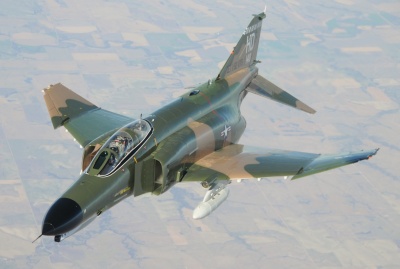
An F-4E of Holloman Air Force base.
The F-4E was initially designed as an incremental upgrade to the standard F-4C airframe used by the US Air Force. The aircraft carried a new radar in a redesigned radome, and more importantly, an internal M61 cannon mounted in the nose. As well, later-production aircraft featured the Agile Eagle upgrade, which gave the Phantom leading edge slats which improved manoeuvrability at the expense of top speed. The addition of an internal cannon was a highly anticipated upgrade, as it fixed a problem that F-4C squadrons faced when operating over Vietnam.
The first F-4Es entered service in the 1960s and were dispatched to serve in Vietnam, where they complemented the existing inventories of F-4C and D variant aircraft. The aircraft type was credited with 21 kills in Vietnam, most of which were achieved using the AIM-7E-2 ‘Dogfight Sparrow’. Several pilots achieved Ace status while flying the F-4 in Vietnam, including Charles B. DeBellevue, who was the highest-scoring American ace in Vietnam. The F-4 went on to form the backbone of the US fighter force for the bulk of the 1960s and 70s. As well, F-4E was flown by the USAF Thunderbirds Demonstration Team between 1969 and 1974. The large, noisy Phantom performed around the world until 1974, when rising fuel costs forced the Thunderbirds to convert to the smaller T-38 Talon.
The F-4E was exported to a variety of countries. Israel was the largest foreign user of the F-4 Phantom, having purchased 124 F-4 Phantoms from the United States betwen 1971 and 1974; the Israelis were credited with at least 115 kills using the F-4 Phantom during various conflicts. As well, Germany and Japan both procured modified versions of the F-4E, being the F-4F and F-4EJ, respectively. Other notable foreign users of the F-4E include Australia (24 aircraft), Egypt (35 aircraft), Greece (34 aircraft), and Turkey (40 aircraft).
During service, the Phantom gained a number of nicknames, including «Rhino» (referencing its titanium construction and long nose), «Double-Ugly», and even «The world’s largest distributor of MiG Parts», referencing the 277 MiGs downed by the Phantom during various conflicts. The USAF retired the aircraft in 1996, and the aircraft was used as a target drone until 2016. The aircraft remains in service with Iran, Japan, South Korea, Greece and Turkey, 62 years after its maiden flight.
General info
Flight performance
Arrestor gear
Accelerates braking by grabbing the brake cable on the deck of the aircraft carrier
Air brakes
Allows you to dramatically reduce the flight speed by releasing special flaps
Drogue parachute
Reduces braking distance when landing on any runway
Max speed
at 12 192 m2 140 km/h
Turn time26 s
Max altitude16 000 m
Engine2 х MTU Aero Engines J79-MTU-17A
Type
Cooling systemAir
Take-off weight24 t
| Characteristics | Max Speed(km/h at 12,192 m) | Max altitude(metres) | Turn time(seconds) | Rate of climb(metres/second) | Take-off run(metres) | |||
|---|---|---|---|---|---|---|---|---|
| AB | RB | AB | RB | AB | RB | |||
| Stock | 2,066 | 2,020 | 16000 | 26.5 | 27.8 | 162.3 | 152.4 | 850 |
| Upgraded | 2,197 | 2,126 | 25.5 | 26.0 | 236.1 | 204.9 |
Details
| Features | |||||
|---|---|---|---|---|---|
| Combat flaps | Take-off flaps | Landing flaps | Air brakes | Arrestor gear | Drogue chute |
| ✓ | ✓ | ✓ | ✓ | ✓ | ✓ |
| Limits | ||||||
|---|---|---|---|---|---|---|
| Wings (km/h) | Gear (km/h) | Flaps (km/h) | Max Static G | |||
| Combat | Take-off | Landing | + | — | ||
| 1458 | 463 | 607 | 580 | 463 | ~11 | ~4 |
| Optimal velocities (km/h) | |||
|---|---|---|---|
| Ailerons | Rudder | Elevators | Radiator |
| < 810 | < 750 | < 700 | N/A |
Engine performance
| Engine | Aircraft mass | |||||
|---|---|---|---|---|---|---|
| Engine name | Number | Basic mass | Wing loading (full fuel) | |||
| MTU Aero Engines J79-MTU-17A | 2 | 14,375 kg | 398 kg/m2 | |||
| Engine characteristics | Mass with fuel (no weapons load) | Max TakeoffWeight | ||||
| Weight (each) | Type | 8m fuel | 20m fuel | 27m fuel | ||
| 1,724 kg | Afterburning axial-flow turbojet | 15,941 kg | 18,196 kg | 19,595 kg | 24,000 kg | |
| Maximum engine thrust @ 0 m (RB/SB) | Thrust to weight ratio @ 0 m (WEP) | |||||
| Condition | 100% | WEP | 8m fuel | 20m fuel | 27m fuel | MTOW |
| Stationary | 5,200 kgf | 8,008 kgf | 1.00 | 0.88 | 0.82 | 0.67 |
| Optimal | 5,200 kgf(0 km/h) | 10,170 kgf(1,400 km/h) | 1.28 | 1.12 | 1.04 | 0.85 |
Survivability and armour
Crew2 people
Speed of destruction
Structural1 458 km/h
Gear463 km/h
Examine the survivability of the aircraft. Note how vulnerable the structure is and how secure the pilot is, whether the fuel tanks are armoured, etc. Describe the armour, if there is any, and also mention the vulnerability of other critical aircraft systems.
Modifications and economy
Repair costBasic → Reference
AB2 090 → 2 823
RB3 430 → 4 633
SB33 770 → 45 623
Total cost of modifications293 000
457 000
Talisman cost2 800
Crew training260 000
Experts930 000
Aces2 800
Research Aces1 080 000
Reward for battleAB / RB / SB
80 / 220 / 350 %
232 / 232 / 232 %
Modifications
| Flight performance | Survivability | Weaponry | ||||||||||||||||||||||||
|---|---|---|---|---|---|---|---|---|---|---|---|---|---|---|---|---|---|---|---|---|---|---|---|---|---|---|
|
|
|
